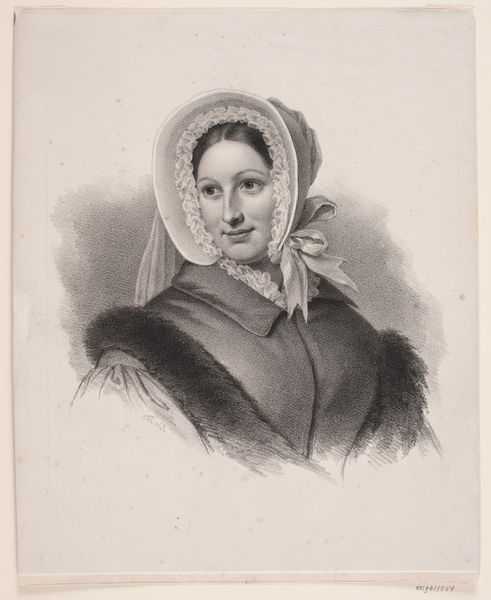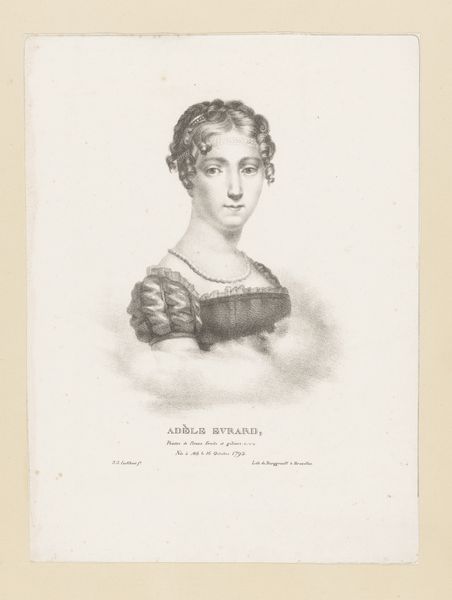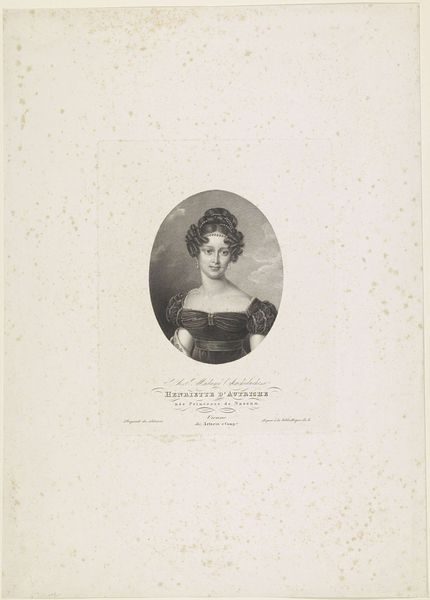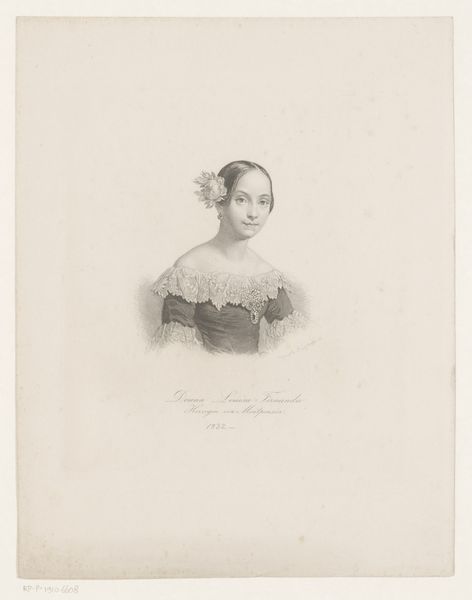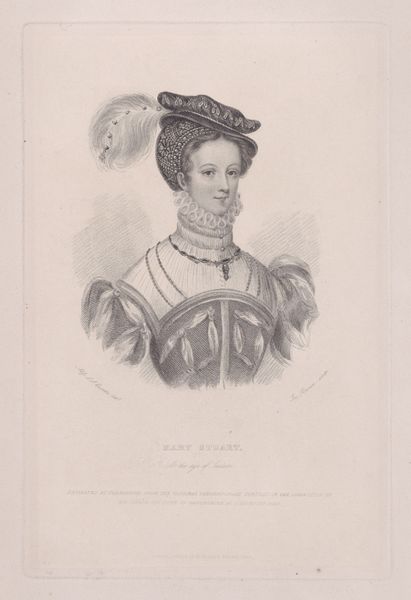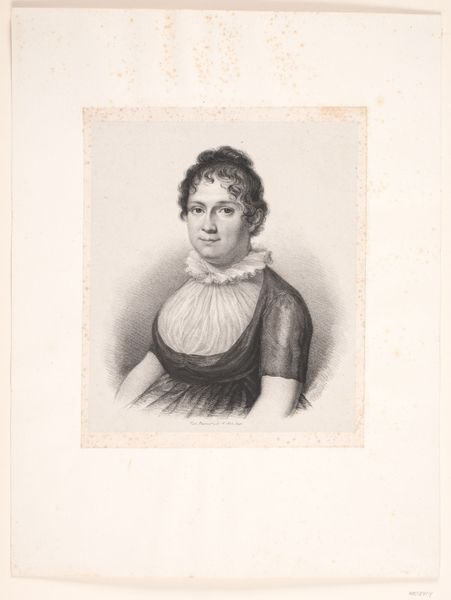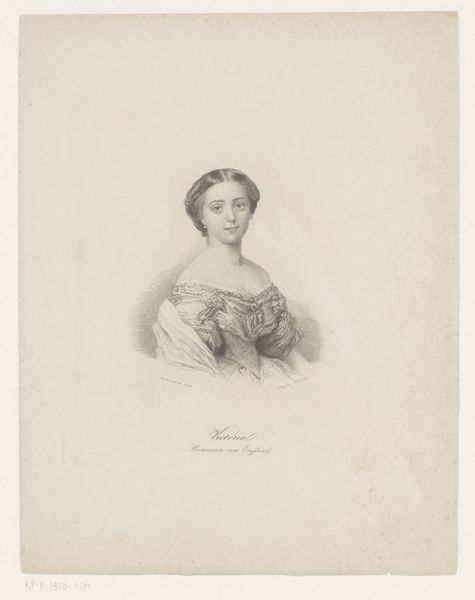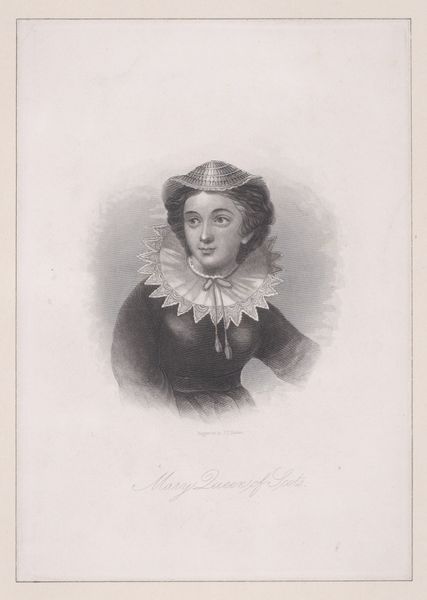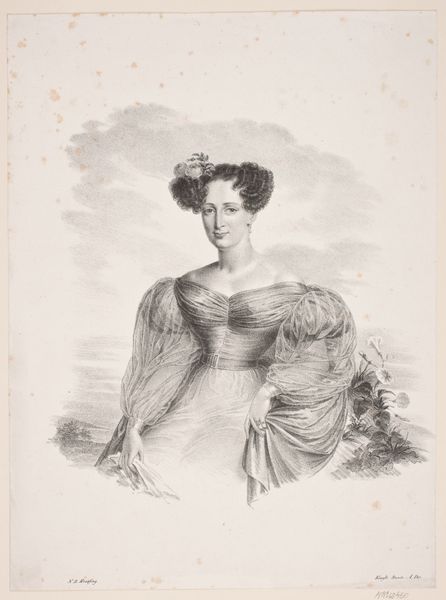
print, engraving
#
portrait
#
neoclacissism
# print
#
engraving
#
realism
Dimensions: height 308 mm, width 238 mm
Copyright: Rijks Museum: Open Domain
This is a portrait of Marie Baesten-Ommeganck, made by Guillaume Philidor Van den Burggraaff. The print was created using lithography, a fascinating process that democratized image-making in the 19th century. Lithography involves drawing on a flat stone or metal plate with a greasy crayon, then treating the surface so that ink adheres only to the drawn areas. This printmaking technique allowed for relatively quick and inexpensive reproduction, a far cry from the labor-intensive methods of engraving that preceded it. The portrait itself, with its emphasis on the sitter’s refined features and elegant attire, speaks to a desire for social mobility, and the newly accessible means of reproducing images allowed for greater circulation of likenesses within the middle class. By understanding the means of production, we can see how this artwork reflects the changing social landscape of its time, challenging traditional ideas about who gets to be represented and how.
Comments
No comments
Be the first to comment and join the conversation on the ultimate creative platform.

